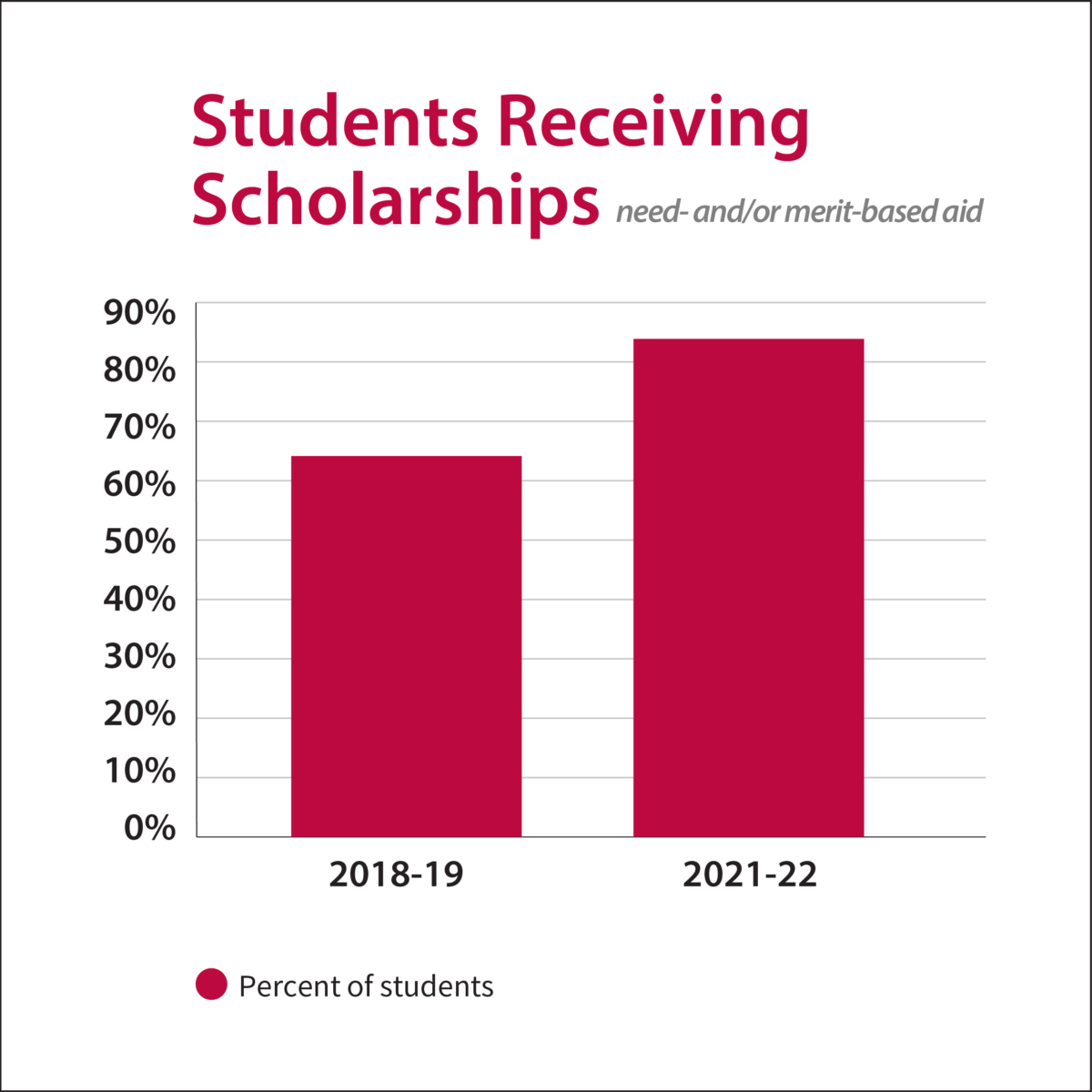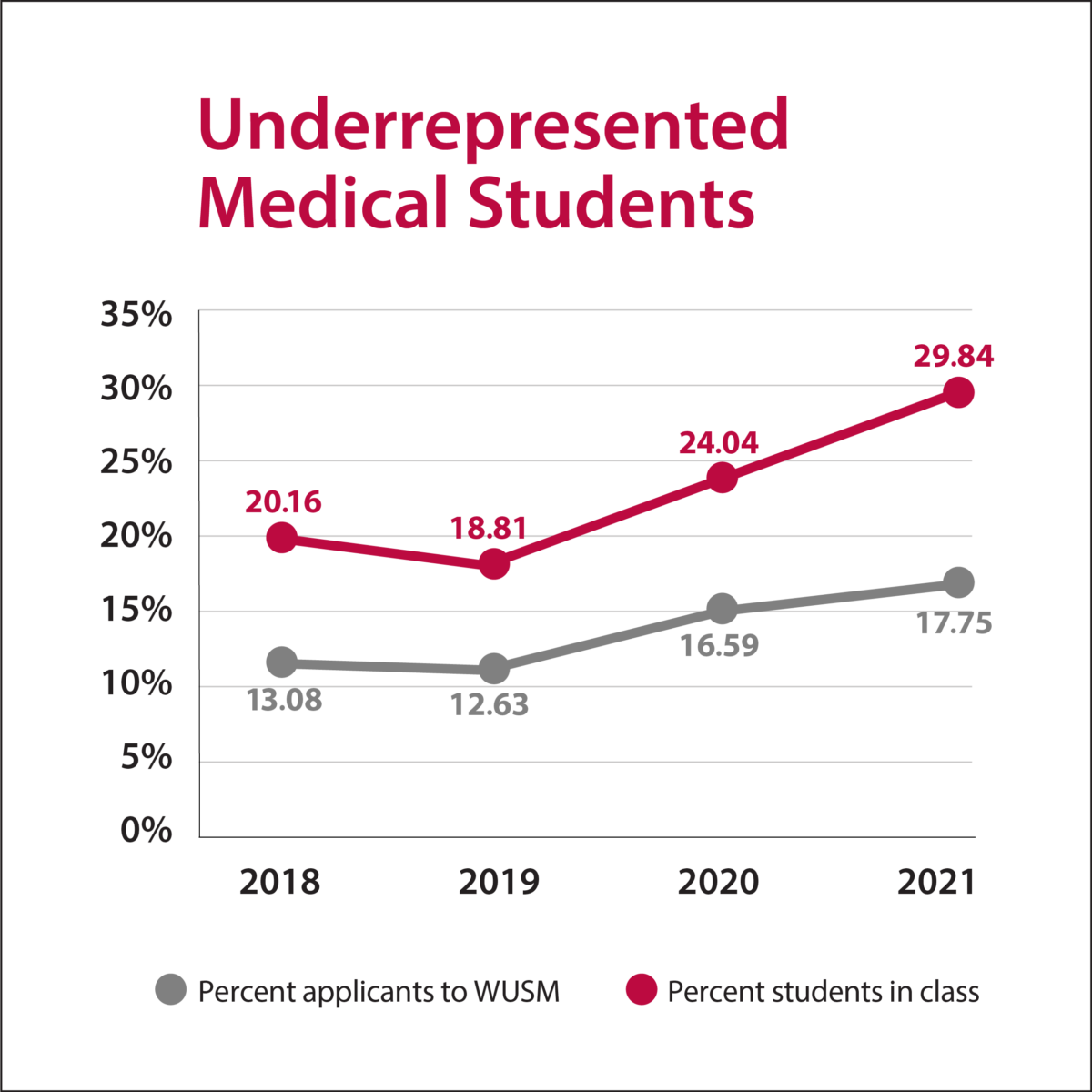
Few people understand better than Eva M. Aagaard, MD, and Valerie S. Ratts, MD, how scholarships affect the School of Medicine’s mission to prepare physician leaders. As vice chancellor for medical education, Aagaard spearheaded the development of the school’s Gateway Curriculum, which debuted in 2020. And Ratts oversees efforts to attract the best students to the medical school.
Beyond training students to become exceptional clinicians, the revamped curriculum builds on the medical school’s recognized expertise in educating physician-scientists. The addition of specialized pathways that nurture the development of physician-teachers, -innovators and -advocates has bolstered the school’s efforts to produce graduates capable of tackling society’s greatest health-care challenges.
Scholarships support this vision by helping the school recruit students whose talents and passions align with academic medicine. That’s one reason Aagaard and Ratts championed the school’s 2019 decision to allocate $100 million over 10 years for scholarships and curriculum renewal. The money supplements scholarships provided to students through philanthropy, which totaled nearly $8 million in fiscal year 2020.
Here, Aagaard and Ratts discuss how scholarships set students free to explore their passions.
How has increased scholarship funding affected recruitment?
Ratts: Over the last few years, we’ve seen our application numbers increase. We were up about 25% in 2021 and 8% in 2022. That compares to a national decrease in applications in 2022. Also, the data show more students choose to attend WashU when we extend offers of admission.
Aagaard: We have increased the proportion of students who receive full or partial scholarships to 85%. And we continue to rank nationally among medical schools whose graduates accrue the least amount of debt. But the landscape around scholarships in medical education has fundamentally shifted. Several medical schools have instituted steep tuition-reduction programs in recent years. If we want to continue to be at the top of our game, we have to be proactive.



Do we ever lose students to medical schools that offer better scholarship packages?
Ratts: It definitely happens. I have students come to me and say, “I just can’t afford to come to WashU.” Sometimes, these students choose to attend medical schools that don’t offer them as many opportunities as we do. I haven’t seen this quite as much in the last few years because of the increased scholarship funding. It’s very clear that even when we give partial scholarships, it makes a huge difference in how students view us and their future.
Aagaard: There’s no question that financial considerations have a significant influence, whether you are talking about a student who comes from an under-resourced background or a middle-class background. In fact, medical students from middle-class families often accumulate the largest debt because parental income still is a part of the financial aid equation for most.
How does debt affect students?
Aagaard: It causes incredible stress. We know it impacts their well-being and their long-term decisions about buying a house, getting married, having a baby and whether they should delay those things. And it also impacts their career decisions.
When students today have a giant amount of debt weighing on them, they start asking, ‘Which career can I choose to ensure I can make enough money?’ It prevents some of them from going into academic medicine because, in general, academic physicians earn less than community physicians. And that’s a real problem for society. We need the best and brightest students to focus their energy on improving the health-care system, generating discoveries that enhance health and well-being, and educating future generations of physicians.
How do scholarships support student development?
Ratts: They provide a financial buffer that allows students to take advantage of experiences available at a top-tier academic medical center to broaden their skills and mindset. Besides getting involved in community outreach and service, some students take an extra year to conduct research or pursue a degree in public health, population health sciences or another area. This really corresponds with what I believe always has been the medical school’s philosophy: Give students outstanding resources, knowledge and mentorship and then set them free to develop their potential.
Aagaard: This place has a special ability to produce people who can fundamentally change human health. We have a truly unique environment that I have never encountered anywhere else, where students are welcomed into every space and given access to so many opportunities. That’s why scholarships at WashU mean more. The impact is bigger.
Interview condensed and edited by Mary Lee, director of advancement communications.
Published in the Summer 2022 issue





 Share
Share Tweet
Tweet Email
Email